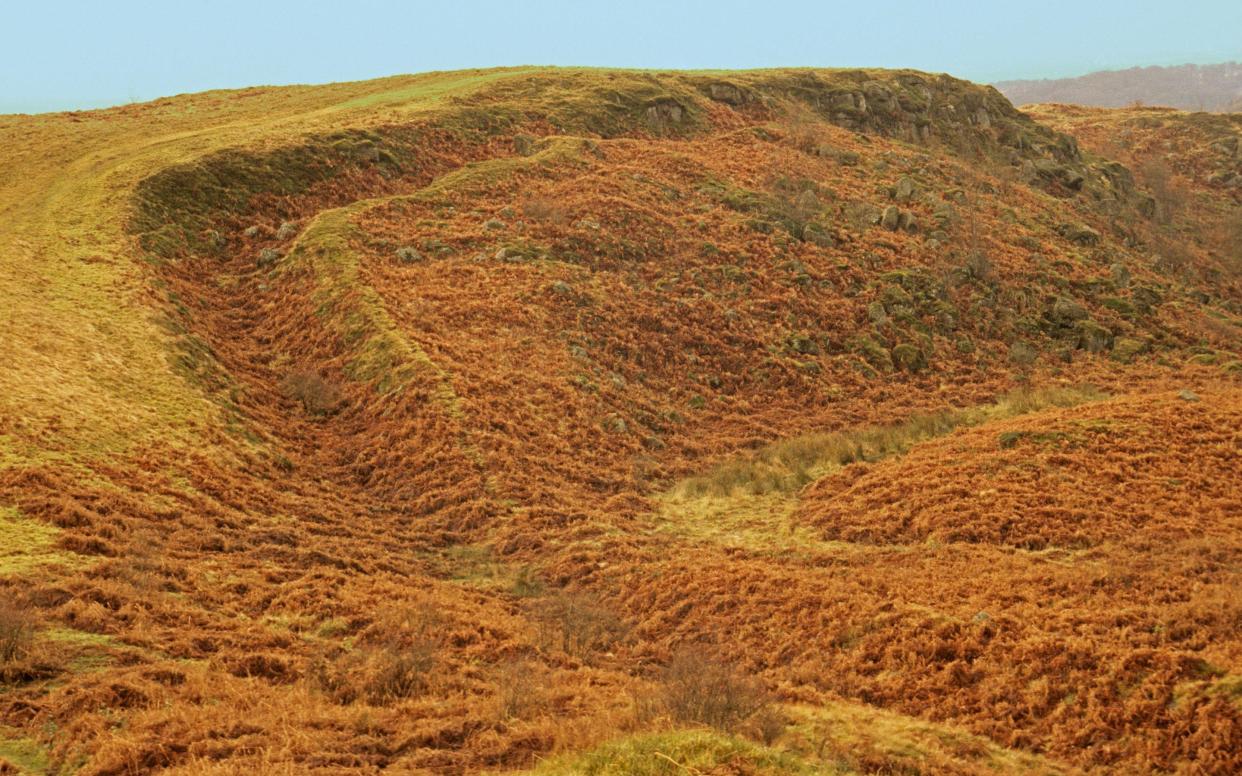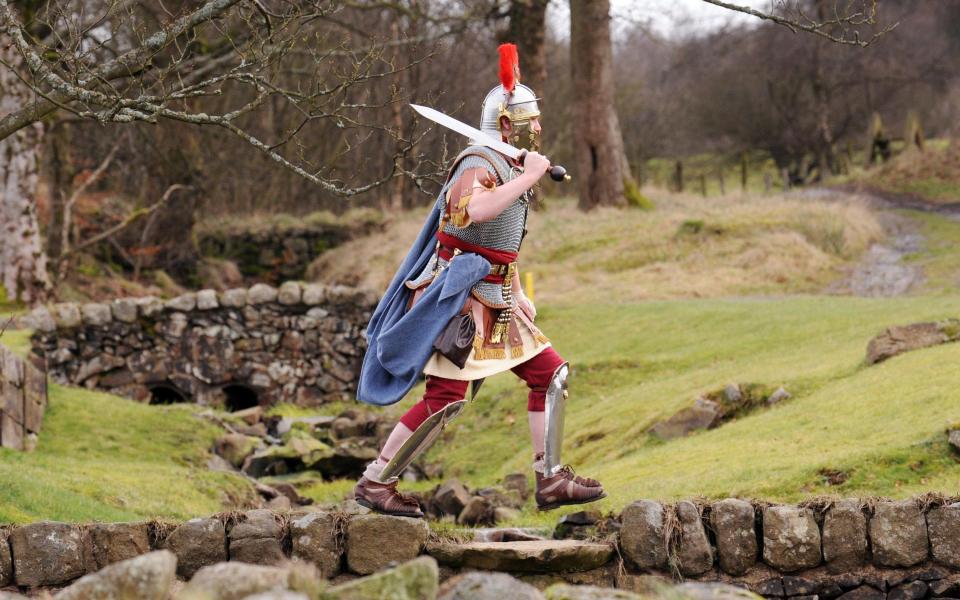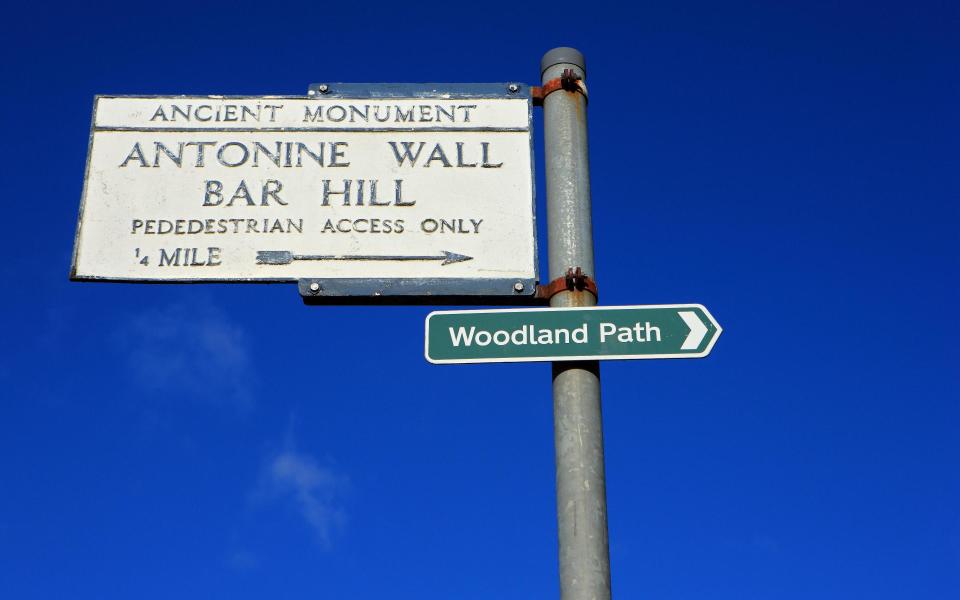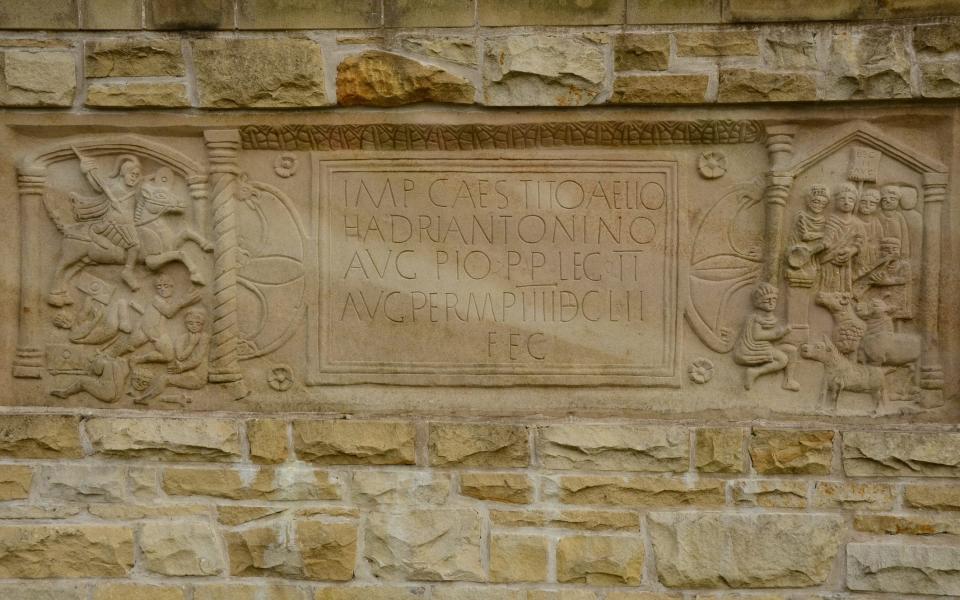Discovering Britain's 'other' ancient wall, the wild edge of the Roman Empire

Given how often it gets mentioned by sports commentators, it’s remarkable that Hadrian’s Wall has never actually marked the Anglo-Scottish border. Indeed – although it comes within an eloping couple of Gretna – at other points it lies over 60 miles distant.
More remarkable still is that many south (and even north) of the border don’t realise that Scotland has its own Hadrian’s Wall in the shape of the 39-mile Vallum Antonini. The Antonine Wall stands alongside its more illustrious sibling on Unesco’s World Heritage list; unheralded, begging exploration.
As a Scot I am ashamed to admit I had traced the Romans from Amiens to Zurich, but not delved deep into ‘our wall’; not until the Covid cage enclosed us all, forcing more local adventures. Of course I knew the Romans from school. Unlike the World Wars they were not black and white, their blood-red tunics seared in my imagination. I learned of wolves as unlikely parents, but never dreamt the very northern frontier of the Roman Empire – the last frontier wall the Romans ever built – lay largely ignored a few miles from my front door.
To be fair to my boyhood self, Scotland forgot about the Antonine Wall for centuries too. After the Romans fled south in AD 162 it fell into disrepair. The visible hulk that vaulted across Central Scotland became known as Graham’s Dyke; its Roman origins lost. It was hidden in plain sight though – Graham in parts of Scotland can mean ‘devil’ and the Roman lines in Germany run along the Teufelsmauer, or ‘Devil’s Wall’.
It is only relatively recently that exploring the Antonine Wall has become easier. I began at Glasgow’s Hunterian Museum, where I learned it took 12 years to build from AD 142 (just a couple of decades after Hadrian’s) and was an effort to protect Britannia from the Caledonian clans, as well as a show of strength. But why was it built so differently to Hadrian’s, and why was it abandoned after less than a generation? The more you learn about the elusive Antonine Wall the more questions it raises. As a historian at the Hunterian explained: “Archaeologists only really started taking an interest in the 20th century and it was not until 2008 that Unesco recognition came, 21 years after Hadrian’s Wall.”

I took the train from Glasgow to Croy, tracing the old Roman Military Way. Fitting, as the rail surveyors followed in the sandal steps of the Romans. The canal builders too. If you’ve tackled the precipitous M8 at Harthill in winter you will know that 20th-century motorway builders thought they knew better – they manifestly didn’t.
The Antonine Wall was one of the first great feats of construction in a nation that became synonymous with world-class engineering. This sturdy turf fortification on solid stone foundations rose to 4m high and was 5m wide, topped with a wooden palisade, and a hulking defensive ditch guarding its northern flank. Bristling with 16 forts and numerous fortlets, over 7,000 legionnaires tightened a noose around Scotland’s great firths – the Clyde and the Forth.
Within minutes of getting off the train I’d hurtled back over a millennia. Almost two. Information boards led towards Croy Hill, but I didn’t need guidance – I was drawn magnetically towards the knoll once adorned by a Roman fort. I felt like a drone transported back into the Roman world. A far as I could see to the left and the right the Antonine Wall heaved through the landscape, surging up to the hill forts of Castlecary and Bar Hill. I was gloriously alone. There may not be as many sturdy stone constructions to admire, but this is Hadrian’s Wall without the crowds, a place where your imagination hurtles wild.

After being ignored for so long the last few years have seen the ‘Rediscovering the Antonine Wall’ initiative. Replica ‘distance slabs’ are being erected (Scotland’s museums are home to the best preserved distance wall slabs in existence) at five sites. The vaulting stone had yet to arrive at Croy Hill, but I found a striking new weathering steel sculpture of a Roman Centurion’s head soaring from the hillside. It was fashioned by a blacksmith who went to my old school. Of course. Covid may have delayed the installation at the five sites, but it won’t stop Scotland finally recognising the Antonine Wall.
The official website features walking routes that link the main sites and the rest of the Wall; driving itineraries too. From Croy I hiked along by the Wall’s route in search of an old fortlet at Seabegs Wood, then even more dramatically to Rough Castle, the best preserved fort. I scrambled up the heaving defensive ditch, mapped out the foundations of the baths, sauna and barracks in the fort and spotted defensive pits.

I’d seen the board games the soldiers used to play at the Hunterian and remnants of shellfish have been found, but life on the Antonine Wall was harsh. The soldiers must have felt impossibly far from home as they blinked out into the wilds where the Caledonian warriors roamed. W.H. Auden sums up their mood of a Roman wall solder in Britannia: “Over the heather the wet wind blows, I’ve lice in my tunic and a cold in my nose, The rain comes pattering out of the sky, I’m a wall soldier, I don’t know why.”
I was devouring Roman sites now like a hungry child. My two days exploring the old Military Way became four. At Callander House I found exhibits on the Romans, as well as chunky section of the Wall. At Tamfourhill Road nearby a plain enough residential street hid a glorious secret. Locals were walking their dogs as kids escaped home schooling on the best preserved section of the Wall; a microscope into the Roman World.
The Romans were not done with me yet, so I’d brought reinforcement in the form of my 12-year-old daughter, Tara. On the Kinneil Estate we ignored the young upstarts of the 16th-century house and the wee cottage where James Watt honed his steam engine. We were searching for the Antonine Wall’s best preserved fortlet. Its stone outline emerged against a vast swathe of dyke, the thick woodland clearing in deference to this historic artery. We tramped along right on top of history.

We arrived in Bo’ness to find the Bridgeness Slab, the most elaborate of the replica distance stone slabs, marking the end of the Antonine Wall. We were just off Grahamsdyke Road, just a few miles from our front door. As we explored its depiction of the Romans subjugating the Caledonian tribes Tara asked: “Everyone knows all about the Romans dad, don’t they?” Sadly they don’t – Tara’s school hadn’t enthused her either about Rome’s most northerly frontier. If you’ve never walked with the legionnaires on the Antonine Wall I recommend you come out of lockdown rekindling the scarlet Roman ghosts of your own childhood as you discover Scotland’s Hadrian’s Wall.
Further information at www.antoninewall.org.
Read more: the best hotels in the UK


